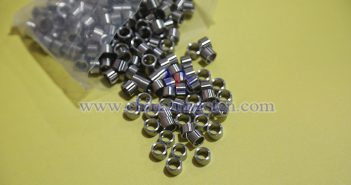
Carbon plays a critical role in regulating the microstructure and mechanical properties of tungsten-nickel-iron alloys, with its influence on alloy hardness primarily achieved through altering the microstructure, forming carbides, and modulating interface bonding states. From a microstructural perspective, tungsten-nickel-iron alloys are primarily composed of tungsten particles and a nickel-iron binding phase, with carbon preferentially reacting with tungsten or other metal elements. At low carbon levels, carbon dissolves interstitially in the nickel-iron binding phase, leading to solid solution strengthening that enhances…









